World Fine Art Professionals and their Key-Pieces, 170 - Nour-Eddine Jarram
World Fine Art Professionals and their Key-Pieces, 170 – Nour-Eddine Jarram
Nour-Eddine Jarram’s studio is located in the bocage landscape of Twente, in a former farm near the flour mill. Where the stackyard used to be, he now paints his large watercolors. The last works – some not yet completely finished – hang on the wall.
He painted this morning on two large-scale watercolor paintings. With the hair dryer they are dried, occasionally he looks if something can be added – removal is not applicable. On the right is an angel with an Arabic text above it. It turns out to be Mary. Mary in heaven. Nour-Eddine: “Based on an Islamic miniature of Mary. Mary also appears in the Qur’an. The same story as in the Bible.” To the left of Mary, I see Jesus in the crucifixion position. Jesus has no arms. His head is hanging down. There is a kind of pouch at the level of his belly. It looks like the pouch of a kangaroo. Nour-Eddine: “Maybe something will come out of the pouch.”
Conquering the image
For some Muslims, Jesus remains a controversial figure even though he appears extensively in the Qur’an. Jesus is often depicted while there is no image of Muhammad in Islam. Salafists have thus had to create their own image of Muhammad, and that is what you see in his appearance, which they, the salafists, think is the true picture of what the prophet looked like.
Christianity turned out to be an enrichment for his art, says Nour-Eddine. “It has many images, while I grew up without images. In my early work, in the 80s and 90s I made portraits, but there were no faces. That was a kind of taboo, I really had to ‘conquer’ those faces. In Islam you can only make beautiful images of the word, that is how the calligraphy came about. The essence of my work is a quest to come to an image, with a face. I borrow images as it were to make my own story. ”
At the moment he lives longer in the Netherlands than in Morocco. “I have laid a bridge. I have released many things to allow other things. I experience it as an enrichment of my life.” In addition to Mary and Jesus there are water-colored portraits of Moroccan boys and a girl. They are part of a large series, especially of boys. “I want to give them a podium, tell their story. Show their problems, dreams and hopes.” The boys show in one way or another, often with their hands, that they want to become ‘big’. One makes the V sign. The girl makes a selfie with her phone call. “She wants to make contact via social media. The boys especially want attention. ”
The boys come from Nour-Eddine’s own background, are based on photographs, including those of his own nephews in Morocco, but also Moroccan boys in the Netherlands. “I view my background critically, I crossed the border myself, the boys are stuck. They see the comforts of modern life and want to participate. They are also very focused on external things: beautiful shoes, a nice watch, a fast car, even more in the Netherlands than in Morocco. They like to photograph themselves for such a car, even though that car is not theirs. ”
A whole oeuvre
Nour-Eddine starts every morning at 9 o’clock. First he makes coffee, then he looks at some sketches he is going to work out or he works on the finishing touch of yesterday’s work. He is working on his knees, because the work-in-progress is on the ground because of the bleeding of the paint. He blows it dry and then hangs it up. He manages it better and better. It started four years ago when he started to make small-sized watercolor series on the table at home, including from refugees. I saw six of them recently at an exhibition in the WM Gallery in Amsterdam. His previous studio in the city of Enschede near the district Roombeek was canceled because of the construction of a new building. At the moment he already had a whole oeuvre to his name: drawings, paintings and graphics. And also some watercolors, but not so much. But after a few watercolors it had him in his grip. “‘That tastes like more’, I thought.” Once in his new studio, he could work in large format. His paper he bought at the Paper Center at the port of Enschede. “Not so expensive and of good quality.”
Earlier he made a furore with his drawings. His drawings were exhibited in 2005 in the CODA Museum in the exhibition ‘Into Drawing’. That exhibition made a tour to several other cities in Europe, including Florence. In 2008, Henk van der Reijd organized an exhibition of artists from the Netherlands in Jaén, Andalusia, with Tjibbe Hooghiemstra, Hans Lemmen, Caren van Herwaarden and Nour-Eddine. In 2011 he participated in the exhibition ‘All about drawing’ at the Stedelijk Museum Schiedam. The exhibition was put together by Arno Kramer and Diana Wind. He shows the beautiful catalog. His daughter, Yasmijn Jarram, also contributed to it. “She teaches at ArtEZ and is an art curator.”
Balance between two worlds
All his work is based on a struggle, he says. It was a struggle with and around the image. It started when he came here, in 1978. “It’s about finding a balance between two worlds. I keep progressing. Four years ago, when I came to this studio, I made a leap in my development. The figuration that I did not have appeared. A Pandora’s Box opened. It came out like lava from a volcano. I had the peace to do my own things. Starting point remains my own culture, hence I will roam, while maintaining my background. ”
In Casablanca Nour-Eddine studied at Ecole supérieure des Beaux Arts. “An intensive education. You learn not only to draw and paint, but also to weave carpet and ceramics. There was even model drawing, somewhat tricky in Morocco. It is a strict education, the teacher determines everything. I learned a lot. Many graduates went to France and some returned later, with the Ecole de Paris in their luggage. A few went to Belgium and I went to the Netherlands with two other boys. I knew Rembrandt and Van Gogh. I was fond of Rembrandt and his world. In my old work you see a lot of chiaroscuro, that comes from Rembrandt. Through the dark, you see the light stronger. I came from a light spot and Rembrandt from a dark place. Rembrandt’s studio had small windows, just like the houses in Morocco. There was kinship. ”
In ’75 Nour-Eddine had graduated and in ’78 he went to the Netherlands for the first time. The police confiscated his passport and sent him back. “I went back the following year haphazardly. I wanted to build a life in the Netherlands.” He went to the AKI and graduated in ’83. In the meantime he had met a Dutch girl, whom he married. “With that, everything was secured.” Through a teacher from the AKI, he ended up at The Living Room, a leading gallery at the time with artists such as Rob Scholte, Aldert Mantje and Harald Vlugt. In 1988 he won, with five others, the Royal Grant that was awarded in the Royal Palace on Dam Square by Queen Beatrix. “I was there with my wife and daughter Yasmine! Sarah my youngest was just born. I could talk to the queen relaxed. It was so great to experience.”
Key work
Does he have a key work, a work that meant a turn in his work? He has. It is called ‘Enemies of Art’. He shows it. I see a room with kind of heads that seem to look anxious. There is a text in Arabic script. “It’s from ’86. The Salman Rushdie affair then played. There was a threat of Islamic violence. It is special that I treat this with my background. I even received a warning that I had to be careful from an anti-racism office. They had received signals in that direction from a Turkish organization. ”
A second key work is ‘The Botanical Lesson’ from 1991, inspired by ‘The Anatomical Lesson’ by Rembrandt. Tulips bend over a cactus to detect the disease. “A culture investigates a different culture. The researchers must be careful because the cactus (that’s me) has spines. ”
The art bus
How does he experience life as an artist? “It is a tough life. I am now 62 and I still have to fight. It obviously belongs to it. My work has been included in various collections, unfortunately not yet in Twente or other museums. Fortunately, I have been represented for years by two good galleries in the Netherlands, Maurits van de Laar in The Hague and Galerie Witteveen in Amsterdam.” Finally, does he have a philosophy? He has. “The art bus is waiting, if you miss it you should not run, but wait for the next bus. Then you come to your destination. ”
Images 1) Nour-Eddine Jarram, 2) Benz, watercolor, 30 x 21 cm, 2015, 3) The botanical lesson, oil on linen, 70 x 60 cm, 1991. Coll. Private, 4) The Lacroix, oil on linen, 180 x 150 cm, 1988, 5) Déradicalisation, watercolor, 30 x 21 cm, 2016, 6) Enemies of Art, oil spray on linen, 190 x 150 cm, 1985. Coll. Municipality of Enschede, 7) Jesus and Mary, watercolor, 150 x 103 cm, 2018, 8) Jesus, watercolor, 150 x 103 cm, 2018, 9) Le choix, watercolor, 30 x 21 cm, 2015, 10) Les pieds nicklés , oil on linen, 170 x 140 cm, 2016
http://www.noureddinejarram.nl/
Disclaimer: The views, opinions and positions expressed within this guest article are those of the author Walter van Teeffelen alone and do not represent those of the Marbella Marbella website. The accuracy, completeness and validity of any statements made within this article are not guaranteed. We accept no liability for any errors, omissions or representations. The copyright of this content belongs to Walter van Teeffelen and any liability with regards to infringement of intellectual property rights remains with the author.

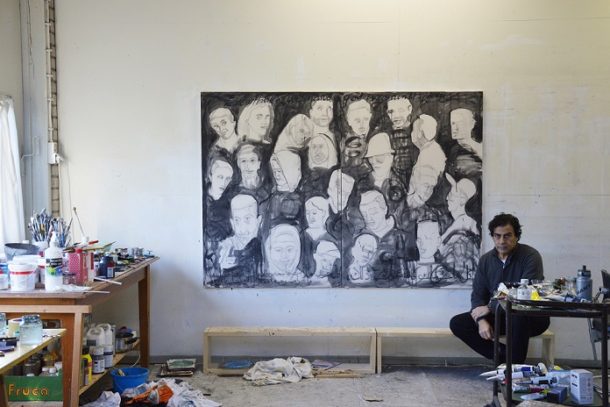
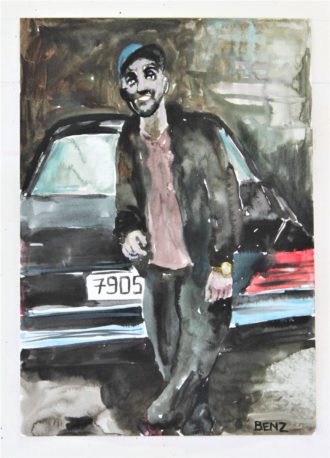
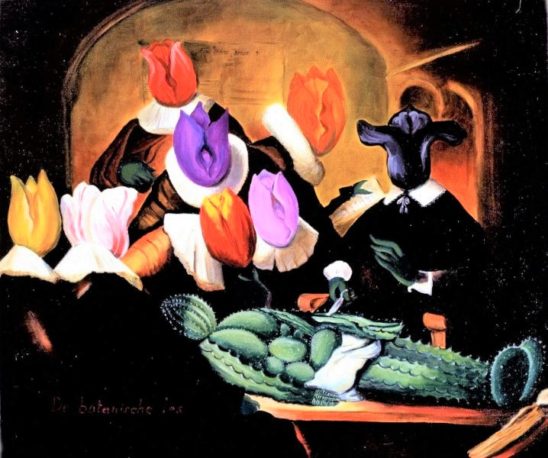
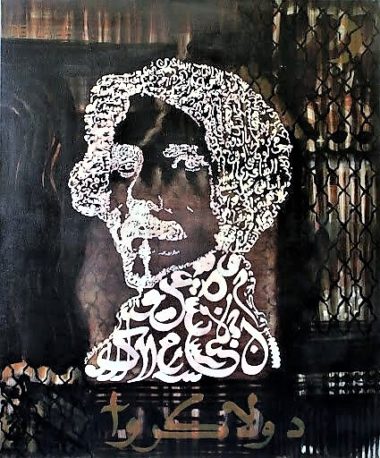
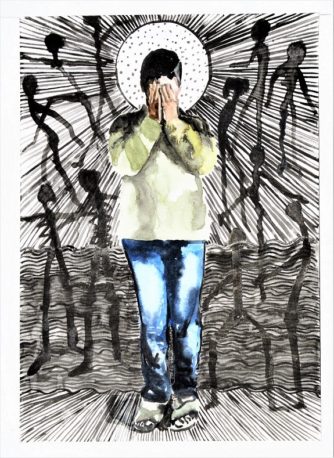
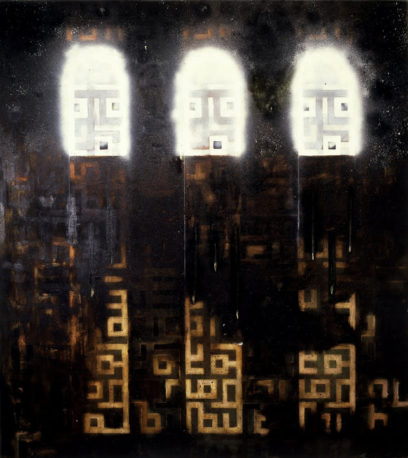
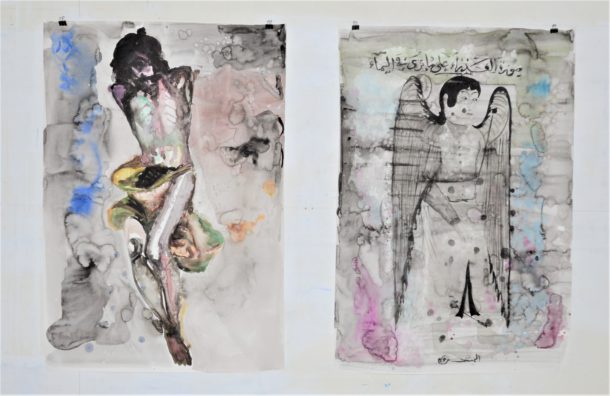
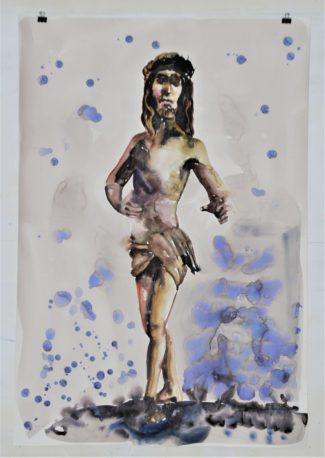
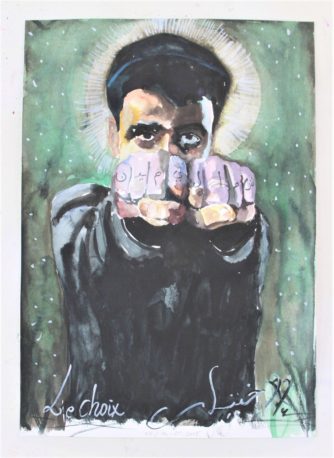















The opinions expressed by individual commentators and contributors do not necessarily constitute this website's position on the particular topic.